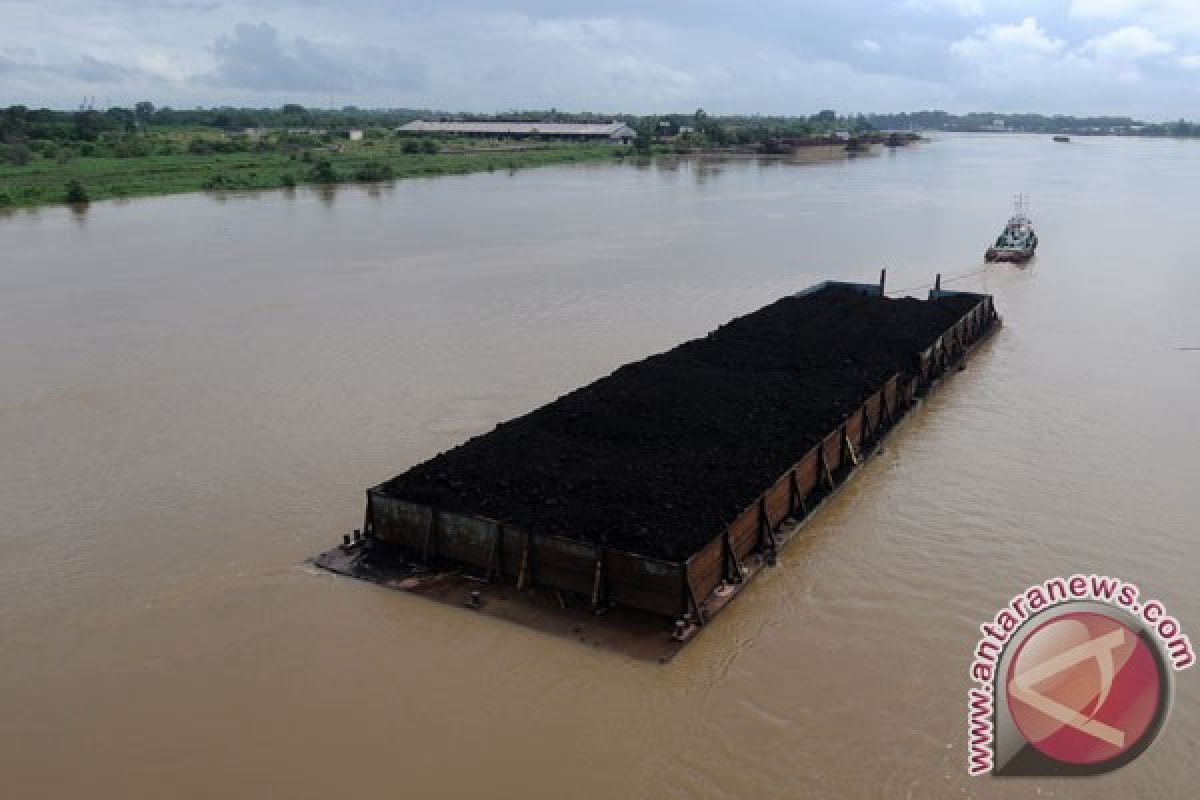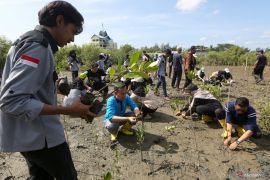That wrong conclusion has Led the government to developing many coal fired power plants in the country, the report "Financial Support for Coal and Renewable Energy in Indonesia," said.
The report said the cost of building coal fired power plant is much more expensive than producing renewable energy.
A writer of the report Lucky Lontoh from the International Institute for Sustainable Development (IISD) said the real cost of generating coal energy including the subsidy and the `external cost` was much higher than producing renewable energy.
"External cost such as recovery of health and environmental damage, make coal fired power plant much costlier than producing renewable energy," Lucky Lontoh said at a recent meeting discussing renewable energy potentials in Indonesia.
External cost is caused mainly by the air pollution with the emission of carbon dioxide degrading the quality of the air and environment, he said, adding it is potential to cause health hazard, and the people are the one to suffer the hardest.
The people have to pay for the external cost and it should be included in calculating the procurement cost of electricity from coal, he said.
Estimated external cost based on international literature study is US$0.06 per KWh. Apart from external cost, subsidies are included in calculating the real cost of power from coal.
The subsidies include support in the form of government policy giving access to coal mining companies to financial assistance such as subsidy definition used internationally.
Subsidy definition includes 15 lists of policies considered as subsidies for coal mining industry in Indonesia such as government support in loan guarantee, infrastructure development guarantee fund for coal mining projects, export tax exemption, import tariff on high technology equipment, and tariff of value added tax (VAT) on goods and services bought by coal mining companies, etc.
Of the 15 lists of policies only seven could be quantified that showed subsidy on the coal sector reached US$946.1 million (Rp12.4 trillion)in 2014, down to US$644.8 million in 2015.
Lucky said in 2015, the subsidy on coal fired power plants with power production at 130,508 GWh was US$0.0049 per KWh per unit. THis is against a subsidy of US$133 million for the production of 25,197 GWh or US$0.0055 per KWh of renewable energy.
The figures show a sharp difference between the subsidy on renewable energy and subsidy on coal. Not to mention the difference caused by the coal external cost including damage to the environment and health hazard .
The subsidy provided for development of renewable energy causes higher cost in short term but the output in power is effective in reducing air pollution and emission of carbon dioxide, therefore, reducing the cost burdening the people in long term.
In addition to external costs, the plan in power development, which is still dominated by dirty energy in Indonesia, also carries significant financial risk to be faced by both the government and the consumers.
Researcher from Auriga Nusantara, Hendrik Siregar, said the financial risk came from the combination of risk guarantee program and increase in credit for coal fired power plants.
A latest report titled "Private Gain, Public Risk : Guarantees and Credit Enhancement for Coal-Fired Power Plants in Indonesia" released by Oil Change International in cooperation with Auriga Nusantara said loan guarantee for coal-fired power plants in 2017 reached US$2.1 million to US$4 million and the figure could be higher as the guarantee continued until beyond 2017.
In addition, billions of US dollars in the form of additional risks created through guarantee for the continuation of business and foreign exchange in the project.
Results of analysis showed that the Indonesian government has taken a risky option by building large scale coal fired power plants.
"Claims that relying more on coal fires power plants in power procurement would contribute to sovereignty in energy security in Indonesia is a big lie," Hendrik said.
On the contrary, support for development of coal industry in anyway, would force Indonesia to bow to pressure of other countries, which supply their outdated coal mining technology , transferring the risk to Indonesia, he said.
Support in regulations
Pius Ginting, the coordinator of the Association of Ecology Action and People Emancipation (AEER) said strong regulation is needed to boost development of renewable energy in Indonesia.
Instead of encouraging development of renewable energy, the existing regulations give priority to development of coal-fired power plants such as in procurement of land for the project, Pius said.
He pointed to development of new Batang coal-fired power plant (PLTU) in Central Java, for which the state uses the Law No. 2 of 2013 on land procurement for public interest projects to provide a land plot for the project.
The regulation has been used to force the local people to sell their rice fields to the project owner against their will, he cited.
Greenpeace energy campaigner Hindun Mulaika said about discrimination in the investment in the coal energy and renewable energy sectors.
Hindun said the government protects in investment in coal energy from all business risks such as with long term power purchase contract as long as 30 years and guarantee in coal purchases.
Such regulation is non existent for investment in renewable energy . There is no power purchase contract that investors have to face high business risk. Therefore, banks are not encourage to give financial support for investment in renewable energy projects.
Power from renewable energy, therefore, would not be competitive in price.
"Indeed, it is necessary to recalculate the cost of developing coal energy in comparison to cost of producing renewable energy," Hindun said, adding, otherwise the government targets in the development of renewable energy, energy mix and at the same time to reduce emission of carbon dioxide would most likely never come to reality.
Three years earlier in the COP21 Paris in France, Indonesia made commitment to reduce CO2 emission by 29 percent with another 41 percent reduction with international assistance in 2030. Indonesia also agreed in the international effort to keep the earth temperature below 1.5 Celsius degrees.
Editing by Fardah Assegaf
Reporter: Helti Marini Sipayung
Editor: Heru Purwanto
Copyright © ANTARA 2018












